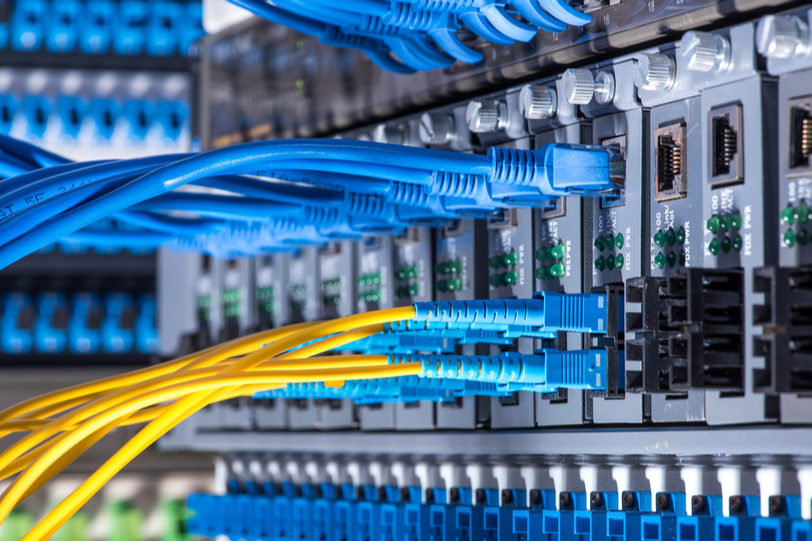
Network connectivity is becoming one of the most important things for enterprises. Enterprises are adopting various cloud technologies like Office, Amazon Web services and Microsoft Azure. Some of the enterprises are even developing web-facing applications for their company. But, only the network connectivity is not important. You have to make sure that your network connectivity must perform optimally. This will make sure that your users won’t experience latency issues.
It is difficult to estimate the bandwidth usage of your company. It becomes more important when you are using provisioning services that don’t have a definite traffic pattern. Thus, more and more enterprises are moving towards a burstable bandwidth strategy for meeting their security and data transfer needs.
Bandwidth Usage
Network Bandwidth Usage is very important for any enterprise. They spend a considerable amount of time thinking about their bandwidth usage. If you have low bandwidth, then the data transfer speed will be very slow. This will affect the user experience of your customers. Bandwidth is used for describing the maximum data transfer rate of your network. It measures how fast you can send data over a specific network. Thus, higher bandwidth will result in higher internet speed and better performance. Many other factors can affect the performance of a network. For example, latency can also affect the performance of any network. But, most companies only focus on the bandwidth parameter because that can be controlled.
Enterprises can choose from various different bandwidth options. You can partner up with a good ISP or Internet service provider. They will ensure that your network is getting good bandwidth. Some of these providers have monthly data transfer limitations. Thus, your customers can’t send unlimited data over your network. But, many colocation providers are also providing unlimited bandwidth to their users.
What is Burstable Bandwidth?
The biggest challenge with evaluating bandwidth is that it is hard to guess the amount of traffic your network is going to receive regularly. You are never going to use the maximum bandwidth allocated to you at all times. Your network traffic is going to fall and rise according to user traffic patterns. For example, if all your users are active during the night, then they are going to push your bandwidth to its limit. But, at day barely anyone will be using your bandwidth. If you are going for a low bandwidth plan, then your users can exceed your bandwidth limitations during the high traffic period. This will cause your network to slow down.
Burstable bandwidth is a perfect solution to this problem. If you are using burstable bandwidth, then you can choose a base bandwidth. This bandwidth is mostly enough to handle your average network traffic. It can even handle slightly higher traffic. This will set a baseline for the data transfer rate that your network can handle. Now, you can set a burstable bandwidth that will use open network ports for delivering more bandwidth. You can use increase your bandwidth during peak hours. If your network traffic has exceeded baseline bandwidth, then the burstable bandwidth will provide extra bandwidth to your network. Thus, your network can even handle higher traffic volumes. The best thing about burstable bandwidth is that your provider won’t charge you for this extra bandwidth.
Billing Models
Burstable bandwidth is perfect for enterprises as it makes sure that your bandwidth can always support your network traffic. However, it can be tough to select the perfect billing model for your network. Most of the colocation providers and ISP offer two different types of billing models:
- Flat or Fixed Rate Billing: In this plan, you can select your burstable bandwidth limit. You will pay for what you exactly need.
- 95th Percentile Billing: In this, the top 5% of your readings will be discarded before calculating your bill. This is the best billing method for most of the enterprises. Your provider knows that you are only going to use 95% of your available bandwidth most of the time. Thus, they will remove the top 5% of highest usage periods. This will make sure that you are not paying for the high burstable bandwidth you are using. But, these plans will charge you more for every burstable Mbps you use. Still, this plan is perfect for most of the business models that experience sudden traffic spikes.
When should you choose the 95th percentile billing model?
This billing model is perfect for those enterprises that know that there working requirements are below-average level. But, still, want to facilitate short term traffic spikes without paying for extra bandwidth. For example, maybe your network only experiences heavy traffic during 7-8 pm or maybe you are dumping data during the month-end. If you are using the 95th percentile billing model, then you don’t need to pay for the extra bandwidth used during these periods. But, it is also important to mitigate DDOS attacks. If you are confident that you won’t consistently use the extra bandwidth, then this billing method is perfect for you.
When should you choose the Fixed Rate billing model?
If your company is consistently using higher bandwidth for more than 5% of the month, then you should switch to a fixed-rate billing model. You can either increase the bandwidth capacity or fix the limit. If you are not properly monitoring the bandwidth usage in the 95th percentile billing model, then you can get an unwelcome surprise after the month model.
Conclusion
Burstable bandwidth is one of the most important things for managing unpredictable traffic spikes. It will also act as a DDoS mitigation tool. Burstable bandwidth will make sure that your services won’t go down during medium-sized DDoS attacks. You can buy these services from either Internet Service Provider (ISP) or colocation providers.
Contact us today to learn about Bleuwire™ services and solutions in how we can help your business.





